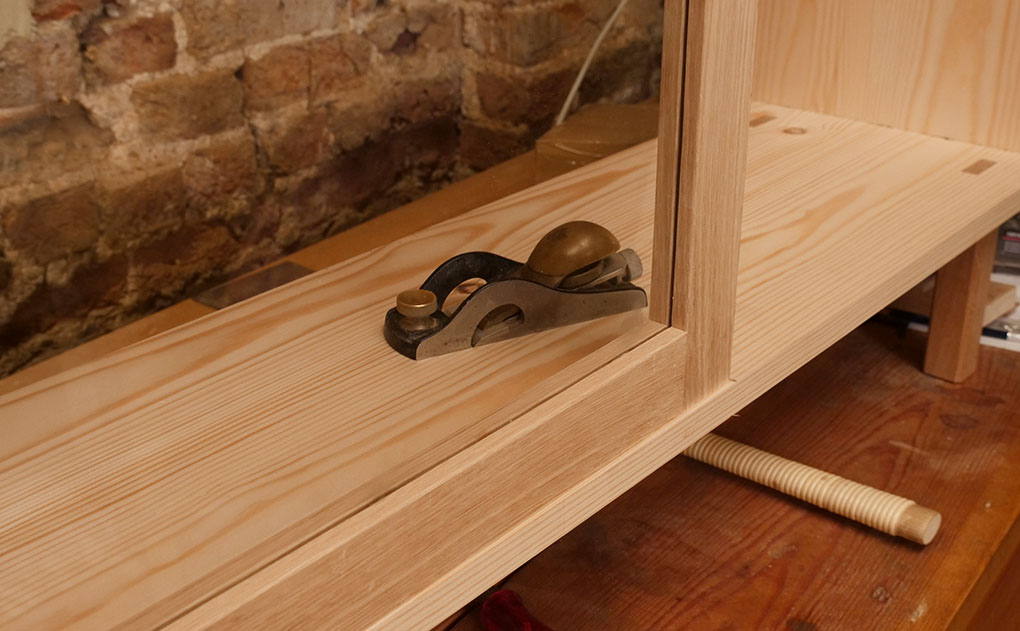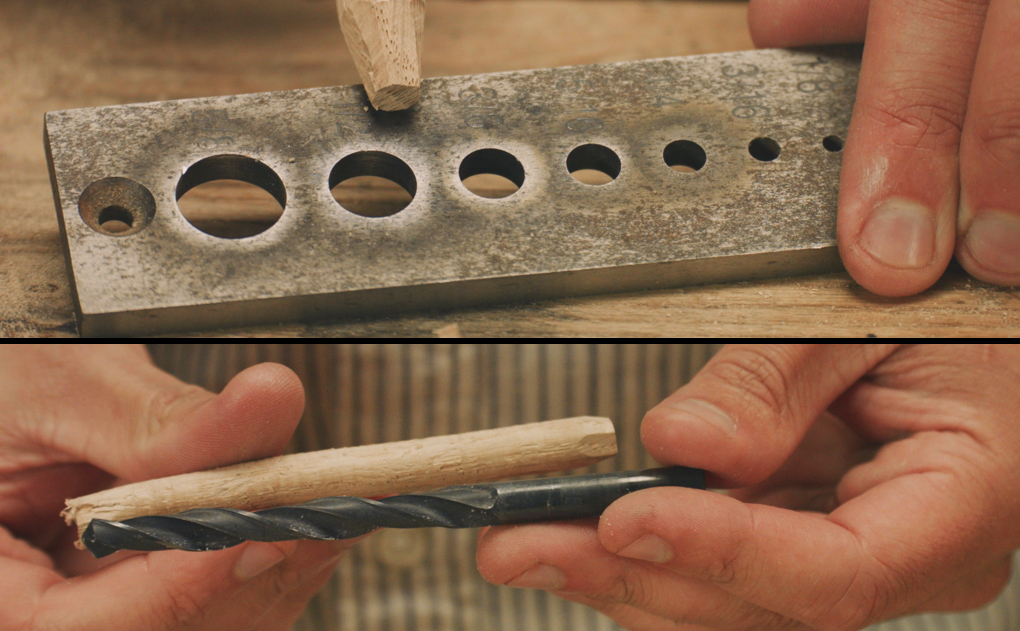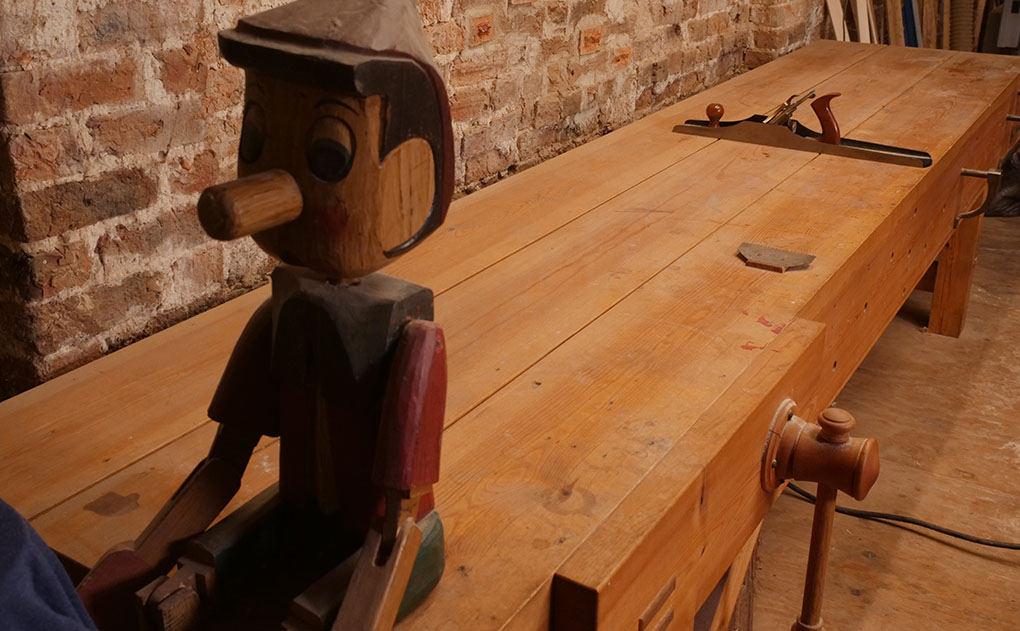

This surprised me.
After tarting up some benches recently I had to check and flatten the tops. They all needed just a little skim, which is what I’d expected.
What I didn’t expect though, was just how stable my 12ft English bench top was.
This is a big bench, and the thing has been stored in the most horrendous conditions. It was even outside for a short time. Under a sheet of course.
It’s had stuff spilt on it, and cooked by heaters, but the top has hardly budged since it was made.
The only time it’s been flattened is when it was first built, four years ago. Today it’s still well within tolerance and if it was staying as my bench, I wouldn’t bother flattening yet.
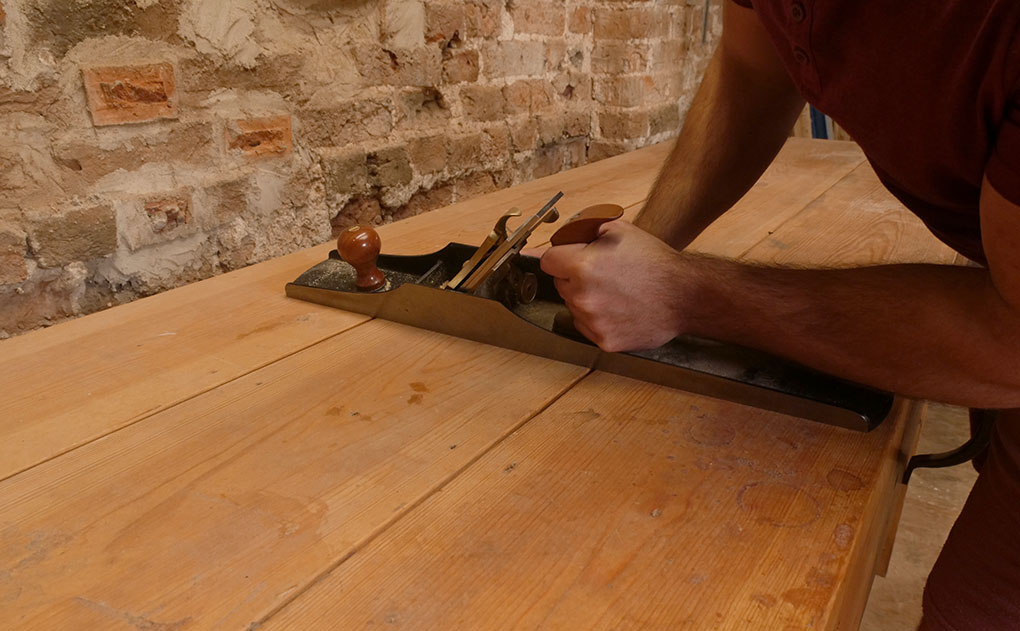
This planked top design is basically the quick and easy option when it comes to building a workbench. So I think it really can go to show that simple is often one of the better choices. Particularly for functioning pieces.
Why is the planked top so stable?
I think it’s all to do with the rib cage below. The top isn’t a slab that’s free floating, it’s fixed down to cross members below it’s surface. Since these run from the front to the back of the bench there’s no chance of this support structure cupping.
The thin, ‘elasticy’ softwood top conforms to these. It’s the combination of softwood, cross members and thin top that makes it work so well.
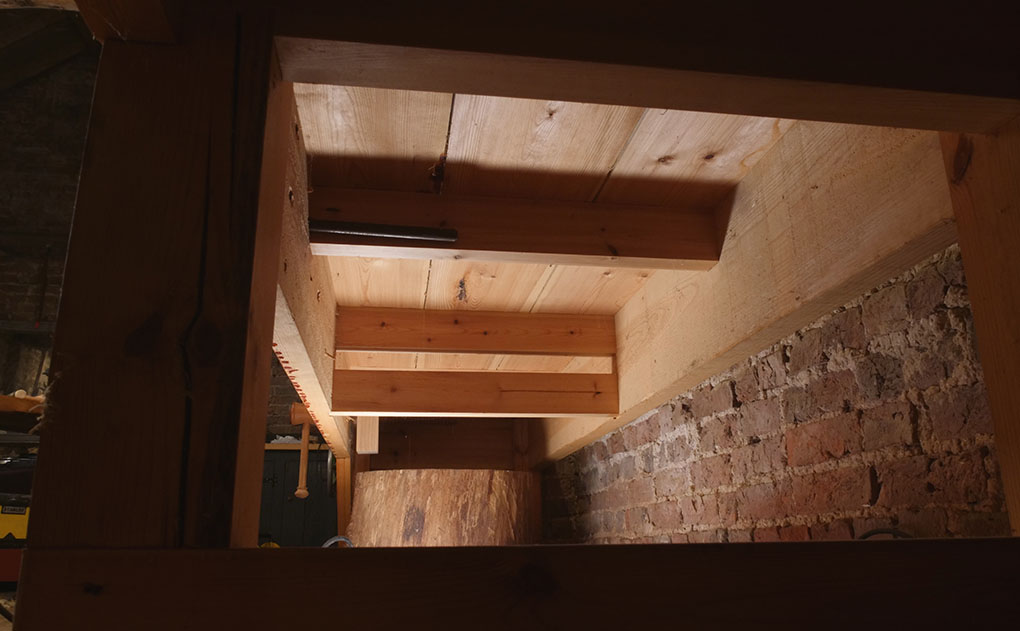
This isn’t saying that there’s no reason for slab based tops, or laminated ones. It’s more showing that the cheap and easy isn’t always bad.
If you’re planning to tackle a workbench build I’m a big believer in getting the basics right, and not over complicating things.
Have a read through here for some thoughts on choosing the best wood for your build.
And this post gives my thoughts on why you should stick with just one vice.
We also have step by step video builds for both this English style workbench, and the French bench. You can find full details of both below:
Build your own English Workbench – with PDF Plans.
Build your own French Workbench – with PDF plans.

